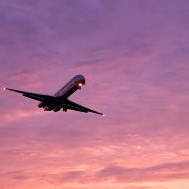We’re re-posting this piece in light of the news report about a Virginia couple who purchased a flying squirrel and had him shipped by the cargo department of American Airlines. The squirrel died while in transport.
The holidays are over, and if you’re like me, you’re already making winter vacation plans and a list of what to pack. Wherever our travels take us, if we’re getting there by air, one “item” that never belongs on our list is our animal companions.
An analysis by a San Francisco–area TV station found that 302 animals died, were injured, or disappeared on commercial airlines during a six-year period. One of these animals was Bam Bam, a large 2-year-old dog who died en route from Miami to San Francisco. According to Bam Bam’s guardian, the dog was left on the hot tarmac in 85-degree heat for nearly four hours during a layover in Houston. When he arrived in San Francisco, Bam Bam’s guardian was informed by airline officials that the dog “didn’t make it.”
Air travel is far from friendly for four-legged fliers. It’s especially crucial never to fly our animal companions in any plane’s cargo hold. Transporting animals as cargo puts them in danger of temperature extremes, both while sitting on the tarmac, as in Bam Bam’s case, and often in the air. Other dangers include rough handling and being lost in transit. And since planes’ cargo holds are designed for luggage—not living, feeling beings—they usually lack the ventilation and climate control found in passenger cabins. Temperatures inside cargo bays can quickly reach deadly extremes, especially during waits on runways.
Many animals have been killed during transit, including a dog named Enzo—who died of heat stress in a plane’s cargo bay despite his guardian’s repeated pleas for the airplane crew to check on him as the plane was delayed for hours on the runway—and a dog named Jed, who was brought out of the holding bay not breathing and covered with urine, feces, and vomit. He had died of suffocation from a lack of oxygen. Even if animals survive a flight, the experience of being tossed among the luggage in a loud, dark, strange place, far from their guardians, is extremely traumatic for them.
If we must fly with our animal companions, taking them in the cabin with us is the least dangerous option. Well in advance of the trip, select a sturdy carrier that is large enough to allow the animal to stand up comfortably and turn around yet small enough to fit under the seat.
For most animals—especially those who are too large to fit in the cabin or are unsuited to flying—the safest and least stressful option is traveling by car or staying at home with a trusted caretaker while we are away. We’ll be glad that we didn’t risk it when we return home from our trip to find our beloved animals safe and happy, eagerly waiting for us at the door.






